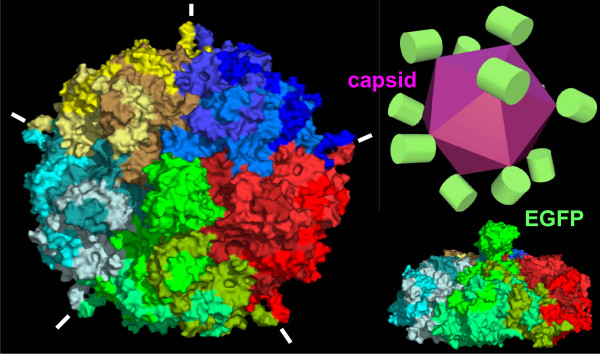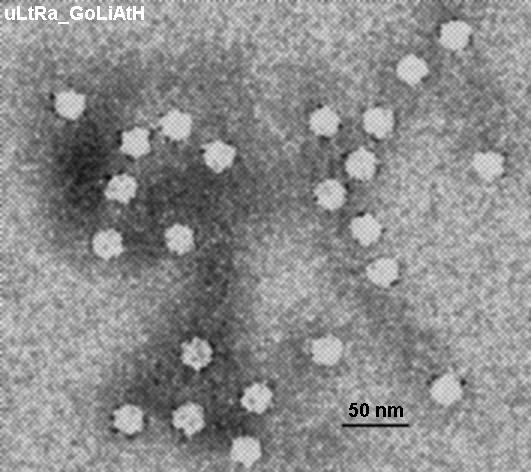Parvovirus
Articles that lack this notice, including many Eduzendium ones, welcome your collaboration! |
| Parvovirus | ||||||||
|---|---|---|---|---|---|---|---|---|
 | ||||||||
| Virus classification | ||||||||
|
Canine Parvovirus has two types. This article addresses only type-II. Canine parvovirus causes disease in animals, but not humans. Parvovirus B19, which causes various diseases in humans, is a member of the Erythrovirus genus of Parvoviridae rather than Parvovirus.
CPV-2 is a highly contagious virus affecting members of the family Canidae. Members would include domestic dogs, coyotes, wolves, and foxes. The virus is spread through direct or indirect contact with infected feces. Possible resevoirs for CPV-2 would include be shoes, paws, cages/carriers, and even soil. The virus can lie dormant on the ground for long periods of time (1+ years). It is resistant to much environmental conditions such as low pH and high temperatures.
Description and significance
Describe the appearance, habitat, etc. of the organism, and why it is important enough to have its genome sequenced. Describe how and where it was isolated. Include a picture or two (with sources) if you can find them.
Genome structure
Describe the size and content of the genome. How many chromosomes? Circular or linear? Other interesting features? What is known about its sequence? Does it have any plasmids? Are they important to the organism's lifestyle?
Parvovirus genome is linear, monopartite, ss DNA of approximately 5 kb in size. Most of the packaged strands of DNA are minus-sense, but the adeno-associated viruses package equal amounts of plus and minus sense DNA. The genome also has palindromic sequences at both the 3' and 5' ends which can fold back on themselves to form "hairpin" structures that are stabilized by self-hydrogen bonding.
Parvovirus replication and assembly occurs in the nucleus and is dependent upon host cellular functions. The hairpin structure at the 3' end is used as a self-primer to start synthesis of a plus-sense DNA, resulting in double stranded-DNA. The hairpin structure is then again used as a primer to transcribe more minus-sense strands from the ds DNA. The current model proposes that the growing strand replicates back on itself to produce a tetrameric form which is then cleaved to result in two plus-sense and two minus-sense strands of DNA.
Cell structure and metabolism
Infectious virions of canine parvovirus contain 60 protein subunits that are predominantly VP-2. The central structural motif of VP-2 has the same topology (an eight-stranded antiparallel beta barrel) as has been found in many other icosahedral viruses but represents only about one-third of the capsid protein. There is a 22 angstrom (A) long protrusion on the threefold axes, a 15 A deep canyon circulating about each of the five cylindrical structures at the fivefold axes, and a 15 A deep depression at the twofold axes. By analogy with rhinoviruses, the canyon may be the site of receptor attachment. Residues related to the antigenic properties of the virus are found on the threefold protrusions. Some of the amino termini of VP-2 run to the exterior in full but not empty virions, which is consistent with the observation that some VP-2 polypeptides in full particles can be cleaved by trypsin. Eleven nucleotides are seen in each of 60 symmetry-related pockets on the interior surface of the capsid and together account for 13 percent of the genome.
Infection
Symptoms
Symptoms of intestinal form, know as enteritis, are depression, lethargy, loss of appetite, vomiting, fever, dehydration and bloody diarrhea. It may also include a lowering of white blood cell count, anemia and loss of protein. In the most severe case, shock and death can follow.
The cardiac form will not produce similar symptoms as the intestinal form. Since it attacks the heart muscle, a major sign is difficulty in breathing.
Ecology
Describe any interactions with other organisms (included eukaryotes), contributions to the environment, effect on environment, etc.
Pathology
How does this organism cause disease? Human, animal, plant hosts? Virulence factors, as well as patient symptoms.
Application to Biotechnology
Does this organism produce any useful compounds or enzymes? What are they and how are they used?
Current Research
Enter summaries of the most recent research here--at least three required

